Links to Pages on This Site
 Home
Home
 History
History
 Spotters Guide
Spotters Guide
 Technical Info
Technical Info
 Racing Info
Racing Info
 Restoration
Restoration
 E-M-F Registry
E-M-F Registry
 EMF Photo Archive
EMF Photo Archive
 Documentation and Adds
Documentation and Adds
 Events & Activities
Events & Activities
 ForSale/Wanted
ForSale/Wanted
 Sign Guest Book
Sign Guest Book
 Links
Links
Quick Links on This Page
 1909 Info
1909 Info
 1910 Info
1910 Info
 1911 Info
1911 Info
 1912 Info
1912 Info
Quick Links on This Page
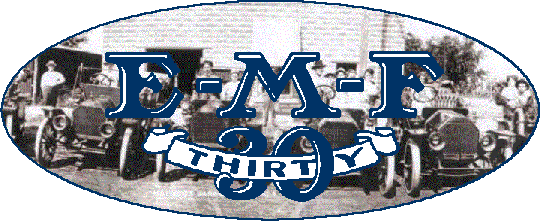
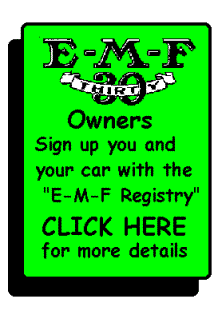
|
 Well, you have found the right page. This paper written by Bill Cuthbert is an
great source of information. Thanks to Bill for allowing it to appear here.
Well, you have found the right page. This paper written by Bill Cuthbert is an
great source of information. Thanks to Bill for allowing it to appear here.
The information used to compile the article came from period publications and articles. In some instances, the information may not line up completely with what was produced (i.e., not all 1911 Standard (open) tourings came with steel radiators). Please keep this in mind when considering this data.
EMF Spotters Guide
By Bill Cuthbert
In 1908 a group of people decided to form an automobile manufacturing company. The three principles of this group, alphabetically, were Everett, Flanders and Metzger. The name of the company, and of the proposed automobile, would be the hyphenated initials of these three men.
Had they decided to place the initials in alphabetical order, the car would have been known as the E-F-M, and an ideal advertising slogan would have been "the Exceptionally Fine Machine." this would have precluded derisive E-M-F comments such as, "Every Morning Fix-it" or "Every Mechanical Fault". But it did not happen that way and the name was E-M-F.
The 1909 E-M-F automobiles began to emerge from assembly in the fall of 1908, and these "exceptionally fine machines" were produced until the fall of 1912. This paper will examine the characteristics of the E-M-F for each of the four production years, following E-M-F's development until it became absorbed and lost within the Studebaker Corp.
1909
Cycle and Automobile Trade Journal (CATJ) for September 1908 has a four-page advertisement with illustrations, and six pages of press release with different illustrations. From this we can learn that the 1909 line-up was intended to consist of three body-styles; a five passenger touring, a roadster and a four passenger demi-tonneau; each to be provided with side lamps, tail lamps, horn, tire repair kit and tools. The touring was well proportioned, had rear doors only, 12 spokes on the rear wheels and 10 on the front. The other body styles had 12 spokes all around. The
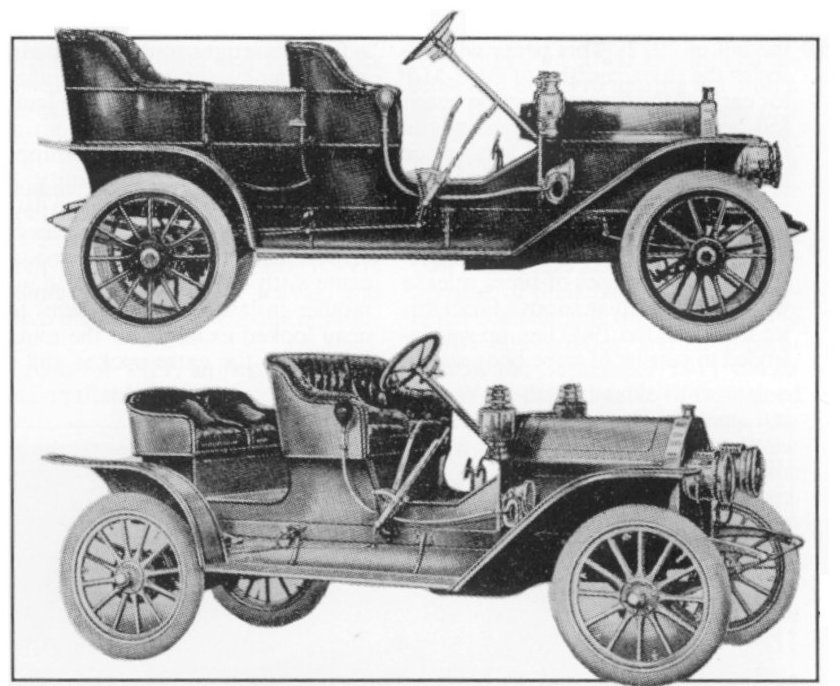
|
| 1909 EMF touring and roadster. Note sweep of rear fenders, and 10-spoke front wheels on touring. Click on the picture to see the full size. |
1910
An illustration from the Cyclopedia of Automobile Engineering, published in
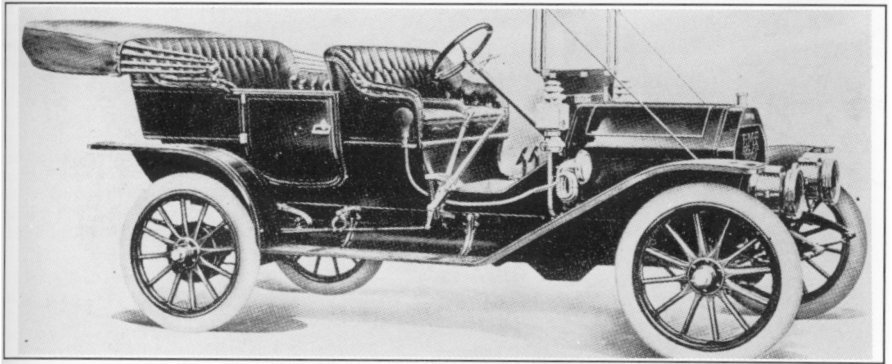
|
| 1910 EMF touring. Note EMF script on radiator, addition of top and windshield, and 12-spoke front wheels. Click on the picture to see the full size. |
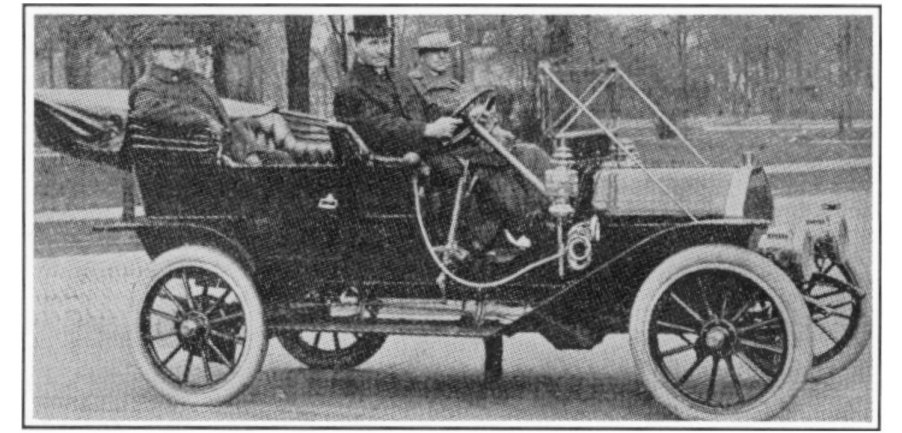
|
| Three lucky men in a 1910 EMF Touring. Click on the picture to see the full size. |
1911
The 1911 touring was shown in the December 1910 CATJ and the January 5,
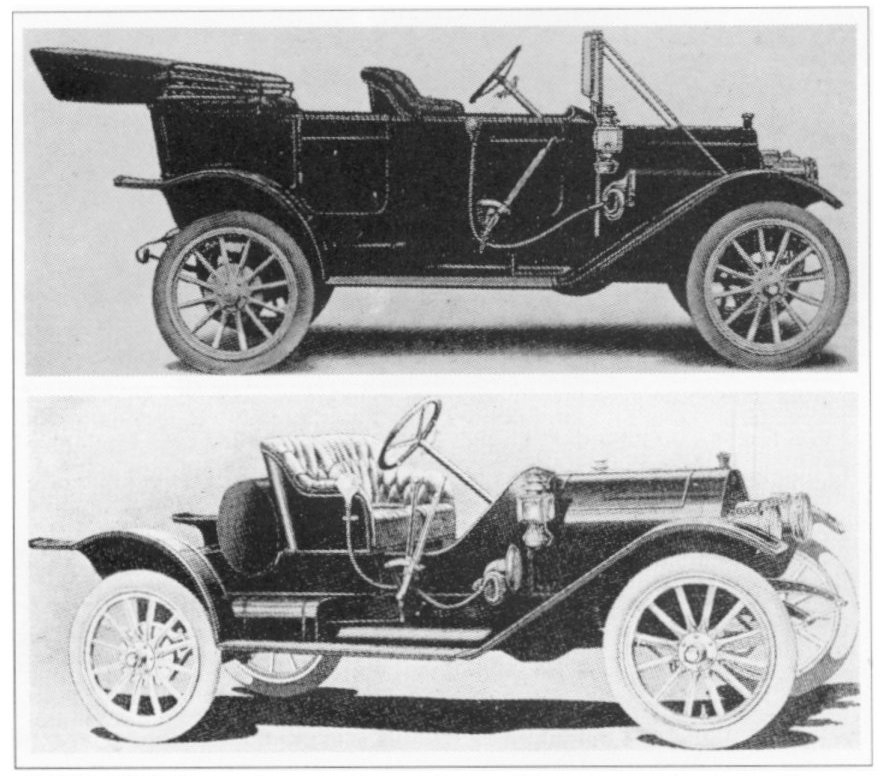
|
| 1911 EMF touring and roadster. Note new design of rear fenders, the cowl and addition of front doors on touring. Click on the picture to see the full size. |
The CATJ for July 1911 elaborates on the new 1911 model by proclaiming the
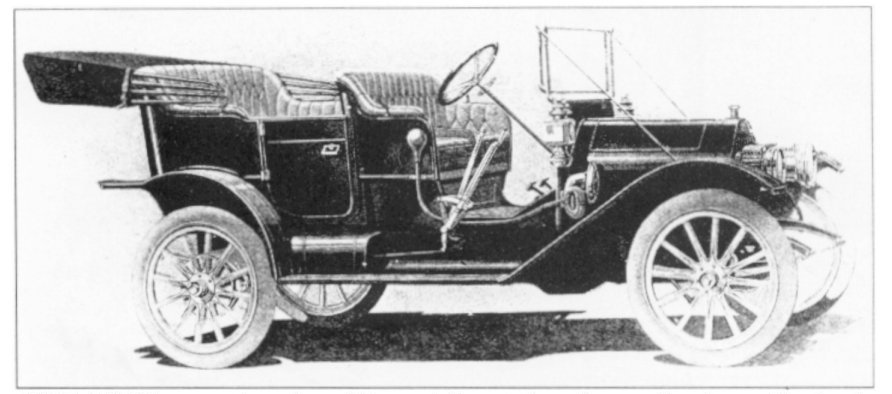
|
| 1911 EMF Standard (Open) touring. Except for the style of rear fenders, and the lack of cowl and front doors, it gives the appearance of 1910 vintage. Click on the picture to see the full size. |
Also for 1911, a "Standard (Open) touring" was available. This model had no front doors or cowl, and looked almost like the 1910 touring but with a steel radiator shell and the new rear fender style of 1911. This "open" touring could easily be mistaken for a 1909 or 1910 model because of its regressive styling.
1912
A small announcement in the August 1911 CATJ stated that the E-M-F division
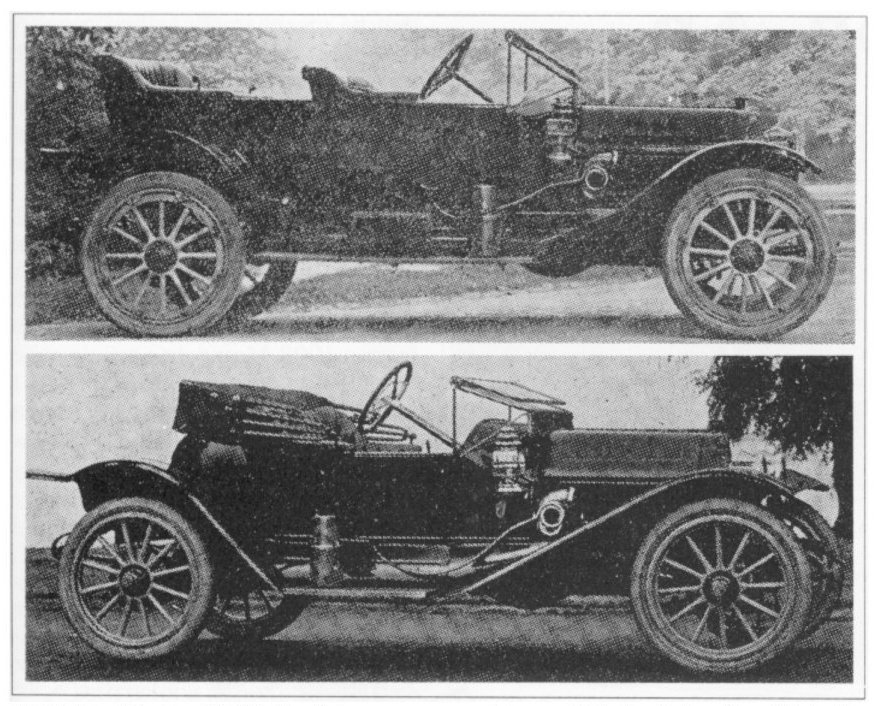
|
| 1912 Studebaker EMF demi-tonneau and Roadster. Note the change to demountable rims. Click on the picture to see the full size. |
According to the February 1912 CATJ, the touring wheelbase was 111, the dropped center front axle was carried over from 1911, and the coupe was still available. Colors were dark blue body with gray stripes and wheels and black frame and fenders. Motor Age for April 4, 1912 illustrates the Studebaker E-M-F touring with demountable rims retained by six lugs.
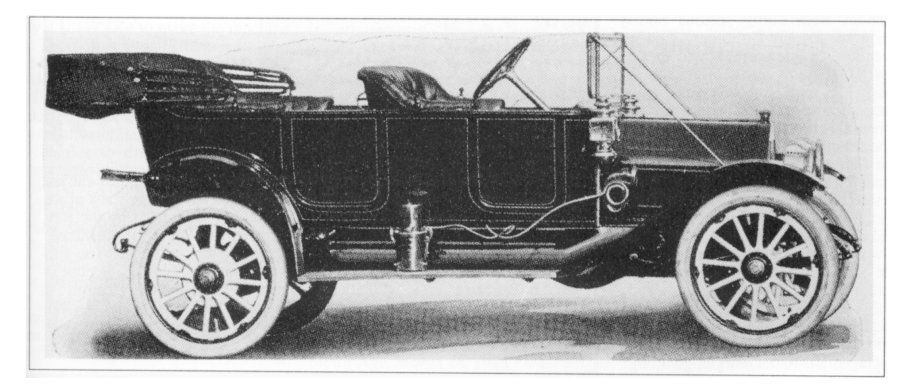
|
| 1912 Studebaker EMF Touring. Note the change to demountable rims, and brake handle moved to within the body. Click on the picture to see the full size. |
Thus ended the E-M-F, the "Exceptionally Fine Machine."
|
|
How to contact me... |

|
|
| Address: |
John M. Daly
P.O. Box 244 Millington, IL 60537 |
|
| Phone: | 815-695-9451 | |
|
|
emf-owner@sbcglobal.net | |